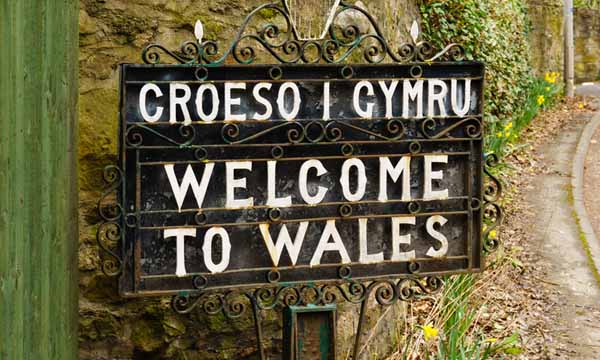From city wide infrastructure to domestic appliances the smart city concept is offering the potential to transform our built environment based on the intelligent use of data. Which raises the question; Are we ready to embrace the smart city future?
Whenever I hear the term “Smart City” I can’t help but think about how I, and no doubt many of you, grew up in an analogue world. It was only in my teens when I experienced the beginning of the technology transformation, when at school a computer room was set-up and we learnt basic programming on BBC Micro computers. Even then the idea of living in a digital, connected, data driven world simply didn’t exist, and the full power of the internet was still a few decades away. Yet already we have generations that have only ever known life in the digital age, and it's this digital world with the ability to collect, process and analyse data that is playing a key role in transforming our built environment.
Where the data comes from and its use is central to the development of any smart city initiatives. Wikipedia offers a robust, and thankfully simple, explanation of this as follows: “data collected from citizens, devices, buildings and assets that is then processed and analyzed (sic) to monitor and manage traffic and transportation systems, power plants, utilities, water supply networks, waste, crime detection, information systems, schools, libraries, hospitals, and other community services.”
Whilst the explanation may be simple, the application certainly isn’t. Fully embracing the smart city has the potential to fundamentally change virtually all aspects of how we live in the built environment. Even for people born into the digital age, this represents a major shift in how we create, develop and manage the infrastructures we all depend on.
This level of data dependency raises the issue of data management. This has to be managed on an ongoing basis by national and local governments, businesses and organisations, and even at a personal level. The collecting and use of data also raises issues around civil liberties, and we shouldn’t simply accept that our personal data will automatically be used in a way that offers positive benefits for society, instead clear assurances are needed to ensure this will be the case. Data is also being collected from a comprehensive range of sources from across our built environment, including sensors and CCTV, and smart city capabilities increase when data sources are combined. For example: During the Pandemic, South Korea used its smart city data hub system to allow health officials to conduct sophisticated contact tracing, and this was achieved by the use of data from cameras and sensors. You may remember news stories reporting how people were using apps that told them, even as they moved around a location, which areas were Covid-19 hotspots that needed to be avoided.
Frustratingly, because it is driven by technology it can be difficult to visualise the smart city, however as we start to return to a form of “normal” our built environment will make even greater use of smart city applications to support life in a post-pandemic landscape, as explained in this article from IT Pro.
From an environmental perspective we know that in the coming years we are going to face significant challenges to meet carbon emission targets, and in terms of wellbeing the provision of care is going to become an increasing challenge for our local authorities. These are just two society wide cases where, if appropriately adopted, smart city technology could prove to be highly beneficial. Equally, even at a household level whilst at present it's perfectly possible to send a drone up to inspect the condition of a roof and gutters, a smart city solution would see the drone sending itself to monitor the roof, and then arranging for a maintenance robot to make the repairs. This is one simple illustration of what could happen as a result of the expected increase in the use of Artificial Intelligence and robotics across our built environment. In many respects we are in the early stages of unlocking the full potential of the smart city, and the extent to which it is adopted will vary depending on the extent it is embraced in specific locations and individual nations.
Coming from the analogue age this fascinates me, and it does also make me consider just how wide reaching the smart city will become. Futuristic visions of the city have been with us since Franz Lang’s 1927 dystopian Metropolis, and if the science fiction predictions had been right we’d all now be travelling by flying cars and living in fully automated homes. However, with smart city technologies we are on the cusp of seeing autonomous vehicles on our streets, and whilst we won’t see an overnight transformation in the way we live, we can see that changes are happening.
This offers genuine opportunities for the business community across Wales, including:
- Identifying ways to embrace and benefit from adopting smart city technologies in existing businesses and organisations to improve services and efficiencies
- Growing and strengthening our presence in: data management, robotics and AI
- Embracing the use of sensor technology to improve how infrastructure and buildings perform
- Creating new highly skilled jobs
- Harnessing the smart city to make life better for all our citizens.
This is by no means an exhaustive list, and at this stage I’d suggest businesses and organisations investigate how smart city solutions could be effectively deployed in ways that are specific to their operations.
We are going to see the increasing use of technology in the transformation of our cities and wider built environment, and to help illustrate how this transformation is already taking place Graeme Scott, Director – UK & Ireland Sector Lead, Intelligence, from the IBI Group explains:
“Smart is a concept, not a product. From our perspective we see it as permeating everything we do – the integration of technology in a seamless manner with design, whether that be making provision within the built environment and infrastructure through to the application of sensors and systems. We’re already doing this across a wide range of projects, from town and city authorities recognising the potential to establish a new generation of revitalised urban centres, to developers creating the homes of tomorrow that support new ways of living and working, and hospitals where technology will transform the delivery of healthcare and the operation of such important facilities. Equally important is the potential for a smart approach to deliver financial benefits through harnessing information and data to support more effective and efficient operations and services.”
As Graeme indicates smart city technologies are becoming increasingly evident in domestic settings, and expanding on this Matt Nimmons, Managing Director of CEDIA, EMEA explains that:
“The general consensus is that a lot of tech trends that were already moving forward have accelerated due to COVID. The move toward remote work is likely the most notable. We have seen integrators be creative in their delivery of home office spaces – whether there is a dedicated room for it, or they need to create a multi-functional space, for example a media room that can be turned into an office when required.
We’ve also seen an uplift of interest in cinema rooms; high quality audio systems to provide dedicated listening experiences; and home security, with smart cameras, doorbells, and security systems all seeing high demand from consumers. The interest in voice control also continues to increase. Even more so due to COVID-19, as there’s no need to touch anything with voice control.”
The thought of the smart city “permeating everything we do ” as Graeme explained is in stark contrast to the analogue world I grew up in. Whilst that world seemed simpler, it was also a very different point in time, and today we have the ability to use smart city technologies to help overcome the increasingly complex challenges facing our built environment. Appropriately embraced, the smart city has the potential to improve our quality of life, protect our environment and make homes better places to live in, and regardless of which “age” you grew-up in that’s an ambition we can all share and work towards achieving.




















